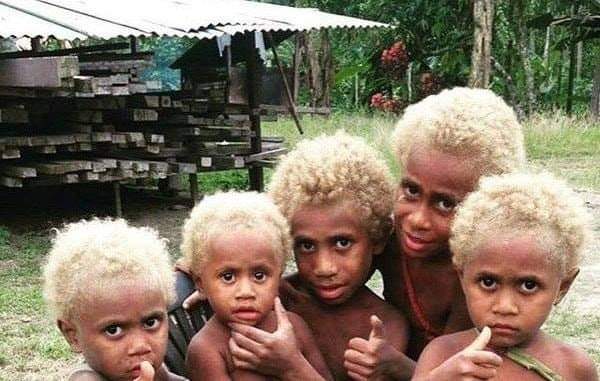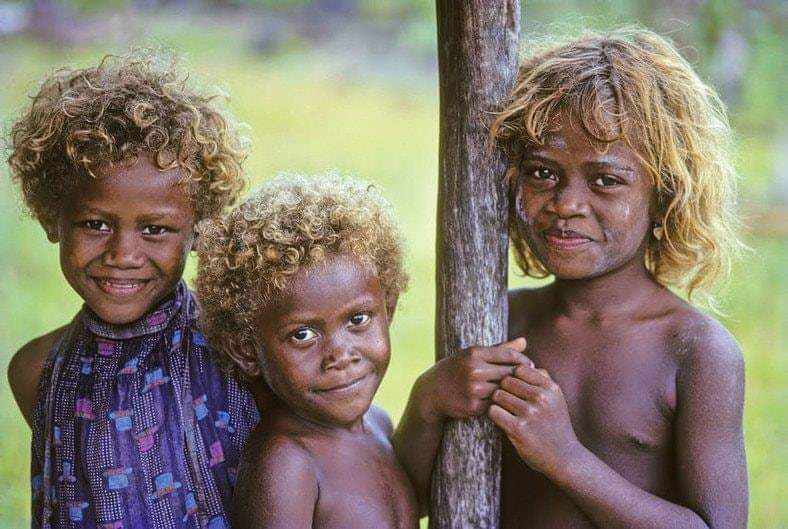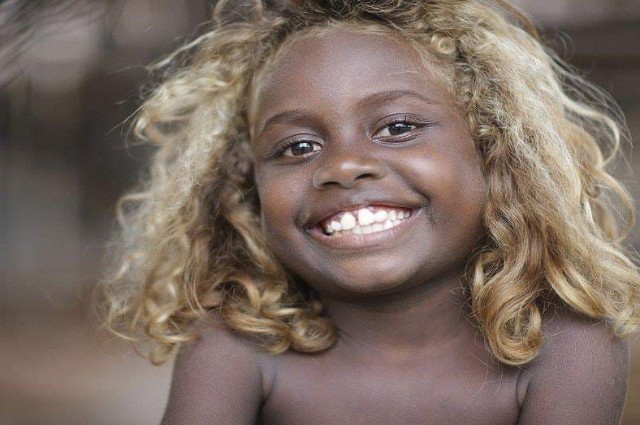Have you ever come across blonde-haired black individuals? Melanesians, the black island inhabitants of the South Pacific, are believed to have migrated several millennia ago. The group of islands referred to as Melanesia may have originally been home to the ancestors of the modern-day Papuan people.
The region stretches from the western edge of the Pacific Ocean to the Arafura Sea and extends eastward to Fiji, and it encompasses the countries of Papua New Guinea, Fiji, Vanuatu, and Solomon Islands. The indigenous Melanesian population can be put into two primary categories based on variations in language, such as the Papuan-speaking and Austronesian-speaking groups, culture, or genetic lineage.

The Melanesian citizens of the Solomon Islands attract attention for their black skin and blonde hair. There are various hypotheses explaining their blonde hair, such as sun and salt bleaching, a diet high in fish, or a genetic history of interbreeding with Americans/Europeans who founded the island.
Blonde hair has evolved independently in Melanesia, where some islanders (along with certain indigenous Australians) are among the few groups that did not inherit the trait from Europeans. Therefore, it remains rare among native populations outside of Europe and North Africa. However, similar to the occurrence of blonde hair in Europe and parts of Asia, it is more common in children than adults and tends to darken with maturity. This can be attributed to a unique TYRP1 allele found in these people, which is distinct from the gene responsible for blonde hair in Europeans.
The Melanesian population exhibits significant diversification and differentiation based on genetic studies. The various groups living across the islands not only distinguish themselves based on individual islands, but also language, topography, and island size. This diversity has developed over tens of thousands of years since initial settlement, as well as following the arrival of Polynesian ancestors in more recent times. The Papuan-speaking groups, in particular, show the most differentiation, while Austronesian-speaking groups along the coastlines display more intermixture.

Since the late 20th century, DNA analysis has expanded research into new territories by discovering additional Homo erectus races or subspecies. Moreover, the Melanesian evidence suggests that their territory extended into Southeast Asia where their ancestors developed.
Eastern Indonesian Melanesians primarily practice Christianity, whereas Western Indonesian Malays and Javanese primarily practice Islam. Until recently, indigenous Melanesians in some areas, such as the Asmat tribe, practiced customs such as cann*balism, headhunting, k*dnapping, and slavery, but with contact with Europeans, the population has largely converted to Christianity. However, some still adhere to a more rural lifestyle.
Research suggests that the cultural, linguistic, and political fragmentation observed during European arrival, with numerous languages and cultures often represented on a single island, was partly the result of changes that had occurred over the past 2,000 years, albeit without full documentation of the prehistory of most islands in Melanesia. During this period, hierarchical political systems and associated trade networks appear to have disintegrated, resulting in increased separation of language or dialect groups.

For over a century, Melanesia’s indigenous peoples have been integrated into the global economic system due to the pressures of Westernization and Christianization. By the early 21st century, even the most remote regions had undergone significant transformations. Despite this, various Christian denominations and individual missionaries have, to varying degrees, respected and understood local languages and cultures. However, between the influence of missionary work and the imposition of colonial rule, a range of cultural traditions – some of which were elaborate and prosperous, while others were abusive and exploitative – were eradicated.
The Melanesian elites increasingly share a common culture, which is a blend of local customs and Westernization, as well as common political and economic interests that cross cultural, linguistic, and national boundaries. As a result, cultural nationalist ideologies have focused on returning to traditional practices such as kastom and “the Melanesian way” – their local way of life – which has become a prominent theme among them.
These ideologies highlight traditional culture as a source of identity and are expressed through the preservation or resurrection of old systems of exchange. Festivals celebrating art, cultural centers, and kastom ideals have shed a more positive light on traditional customs such as ceremonial exchange, dance and music, and oral traditions, which have long been suppressed by conservative and evangelical forms of Christianity.
